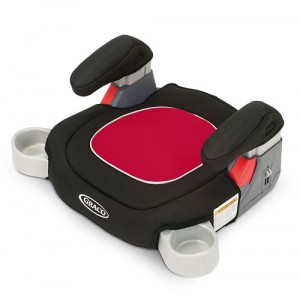Arizona parents may be surprised to find that in less than a week, on August 2, the Arizona child restraint laws are changing. Currently, Arizona law requires that a child be restrained in a child seat until age five. However, effective August 2, that age rises to eight. In other words, the law has extended the amount of time a child must be in a child safety seat by three years. Arizona is one of the last states to adopt such a measure and many think it is long overdue. If you are one of the parents out there who question the need for an older child to use a booster seat, I encourage you to keep reading. I recently had the chance to interview Sarah Tilton, a Child Passenger Safety Advocate from Britax, and she had quite a lot to say about this new law and the need for it. She also provided some potentially life saving information. Before I share that important interview with you, let me give you a few facts:
- New law is effective August 2
- Any child under eight years old or less than 4 feet 9 inches tall must be in a child restraint
- Violations punishable by $50 fine
- According to statistics from the Arizona Department of Health Services for 2009, seven of the nine children ages 5-8 who died in a vehicle crash were not properly restrained in a booster seat.
- In addition, in 2010, all five children ages 5-8 who died in a vehicle crash were not properly restrained in a booster seat.
- Booster seats do not have to be expensive. Many retailers offer seats for as little as $15.
My interview with Sarah Tilton was very informative. She has a background in mechanical engineering and design and she answered my questions with useful details and facts. I appreciated that because I do not take kindly to experts who give answers in a “because I said so” kind of way. I prefer logical explanations and that is what Ms. Tilton gave me. She answered questions regarding the new Arizona law and also a few more general questions about child passenger safety.
I am sure you agree with Tilton when she says that one of the hardest things for families will be getting a child who has been out of a car seat for some time back into a seat. There may be fighting and resistance but it ultimately comes down to who is in charge (hopefully the parent). Some ideas for reducing this conflict include referring to the seat as a big boy or big girl seat instead of a baby seat, letting the child help pick out the seat, and opting for more stylish and brightly colored seats.
Maybe the child will be easy to get back into the seat in your family. But what if it is the parents who need convincing? You may be saying “I graduated my child out of her seat and told her she was a big girl now! How can I demote her?” Tilton’s answer to that is that parents should actually consider the move from booster seat to seat belt only (and other similar transitions) as a demotion because the amount of safety provided is being reduced. I had never thought of it that way, but yes, a booster seat provides less protection than a convertible seat does. Here is some more useful information from the interview:
- Seat belts do not properly fit children since they are designed for adults.
- A child using only a seat belt can be seriously or fatally wounded as the lap belt can act like a knife to internal organs in an accident.
- The main purpose of a booster seat is to properly position the seat belt.
- Due to variations in torso length, height, posture etc., there is no magic age or height to determine when a booster is no longer needed.
- A child is usually ready to get out of a booster seat when they meet all of the following criteria while siting in the car:
- Back is against seat
- Knees can bend at seat edge
- Feet are flat on floor (So they won’t slouch in seat to rest feet on floor)
- Lap belt rests across hips
- Shoulder belt sits snug across collarbone and chest
- Most kids meet all these criteria between the ages of 8 and 12
- The LATCH system is just as safe as using the seat belts to secure a child safety seat, so long as you are following the owners manual’s recommendation for LATCH weight limits.
- Moving a child from a harness type of seat to a seat belt only booster gives them greater freedom to move around in their seat and to reach for things in the car. Remember this when you are deciding whether or not to move into a booster.



